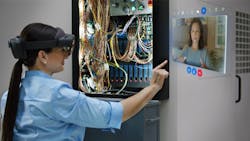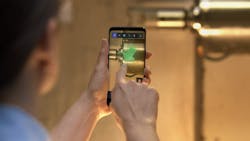About the author:
David Goforth is vice president of field sales and service for Ecolab, Food & Beverage, North America. Goforth can be reached by contacting Philip Stein, director of commercial digital solutions for Ecolab at [email protected].
Many of the world’s largest food and beverage companies have taken priority in making commitments to address the climate impact associated with food production, in particular reducing emissions and the amount of water used throughout their supply chains. To tackle this, a digital transformation has been taking place at facilities to gain better visibility and actionable insights into operations.
And while the digital journey for food and beverage companies has been advancing for years, COVID-19 has accelerated the demand for transformation in the industry and has uncovered new opportunities and benefits for digital tools.
Due to the challenges the pandemic has created and keeping employees healthy and safe in order to keep producing critical goods with much of the country on lockdown, digitization has again become a priority. Digital tools and technology, like mixed reality, which have existed for years, have been adopted as a result. This has an added benefit of continuing to make strides towards commitments in reducing emissions while building more resilient supply chains.
A Mixed Reality Response
Taking a close look at water management as an example of digital tools in practice: digital technology from sensors and analytics shed light on how water is used in operations. This allows organizations to better assess their risk associated with water and predict maintenance ahead of time. These technologies have the potential to save millions of gallons of water across facilities, which in turn can create cost savings for the business. As a result of the pandemic, the food and beverage industry has increased interest in expanding its digital footprint to improve operational efficiency.
Mixed reality is the incorporation of digital tech and real-world application. One example is Microsoft HoloLens, which is a wearable display that can provide an operational dashboard and allows users to share what they are seeing in real-time. Its application can be for training, remote service and even assist with day-to-day functions. For maintaining facility water systems and troubleshooting issues during the last several months of lockdown, mixed reality has played a mission-critical role.
Perhaps the most significant benefit of technology like mixed reality is that it enables facility managers and service providers remote access to facilities. A technical representative in the field wearing Microsoft HoloLens devices allows them to virtually connect to service experts, engineers and cross-functional teams for support. This enables personnel to remotely diagnose and troubleshoot issues, with engineers available to virtually oversee chemistry usage, guide the installation of new equipment, monitor water quality, help train new employees and ultimately, implement solutions.
As a result of the use of mixed reality, response times are quicker and multiple experts can collaborate to diagnose and troubleshoot customer problems without having to travel to the site. Mixed reality enables facilities to ensure social distancing during COVID-19, and it gives access to facilities that have closed or restricted access during the pandemic, helping to keep them operating when they have faced reduced operations or complete shutdowns.
Some specific examples include using mixed reality to identify and fix tank leaks, cross-contamination and site surveys. One beverage producer was able to move to remote training with mixed reality, providing instruction for new employees on how to perform an acid wash. This type of mixed reality program can save days in response time in some instances, eliminate travel expenses and keeps customers and associates safer.
Digital Transformation Beyond the Pandemic
The COVID-19 pandemic has pushed the food and beverage industry further into a digital future, accelerating years of technology adoption into a matter of months. These investments have far-reaching potential beyond the circumstances of the pandemic as they create further efficiency in operations.
While mixed reality is one of the most bleeding-edge use cases of digital technology, the use of sensors and the internet of things (IoT) has allowed greater use of analytics in the industry. IoT has existed in some form for more than three decades, and now we have data analytics that incorporates AI and the ability to predict problems.
For a company prioritizing water management in their operations, today’s technology enables them to monitor facility water use, energy and financial performance in real-time without being on site or waiting for test results from labs. Water chemistry testing time for waterborne bacteria, for example, has dropped from two days to 15 minutes. Where some solutions to reduce corrosion in water systems may have taken six months, it has been reduced to hours or days. Water and energy savings as a result of better real-time tracking are also helping companies meet corporate sustainability goals.
Digital tools are boosting efficiency and avoiding downtime, which is always critical, but particularly so during the COVID-19 pandemic when so many people are relying on a robust food supply. In one case, a customer used 3D TRASAR Technology for clean in place to save nearly 1,300 hours of cleaning time annually and conserve almost one million gallons of water.
Realizing Value in Efficiency
The pandemic has sped up the process for food and beverage companies to adopt digital tools, and they are certainly realizing their value. The time and money savings are undeniable. Now that companies are understanding the value of the data they have and how IoT, artificial intelligence, predictive analytics and automation can dramatically improve their operations, they will not go back.
For many, it is also a shift in business model. Companies that do not make use of these tools could place themselves at a competitive disadvantage. Digital tools are improving product quality and production volume. We are entering a new era.


